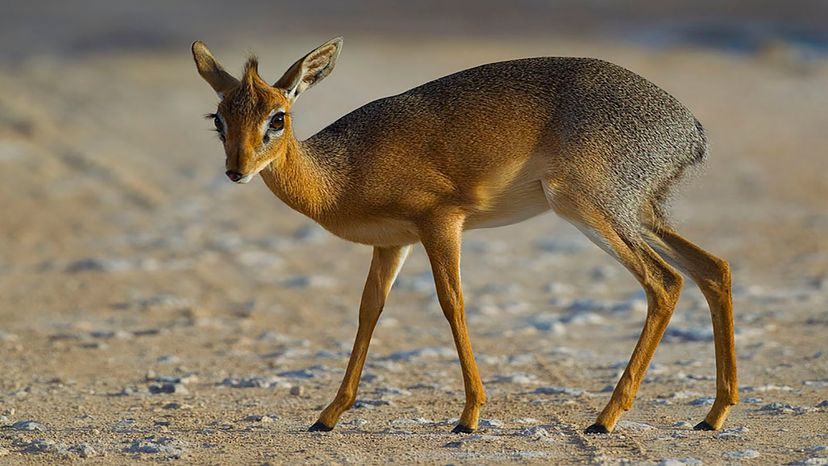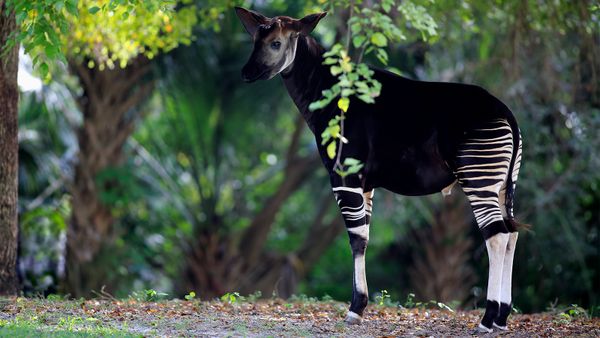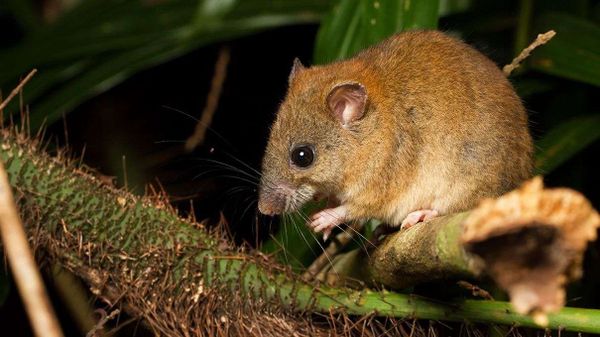There are four species of dik-diks found throughout Africa, mostly in dry, semi-desert areas. Gunther's dik-diks live in the dry areas of east Africa, while Kirk's dik-diks are found in eastern and southwestern Africa. Silver dik-diks live in the low, dense thickets of Somalia's southeastern coast and in southeastern Ethiopia, and Salt's dik-diks are found in northern Kenya and eastern Sudan. Each of these species has multiple subspecies.
The Brookfield Zoo in Brookfield, Illinois, north of Chicago, is home to four dik-diks – one male and three females. Amy Roberts, senior curator of mammals at the zoo, spoke with us about these tiny antelopes.
The dik-dik's Bambi-like face is dominated by its prominent snout and dark eyes ringed with white markings. A black preorbital gland about the size of a pencil eraser looks like a dot at the corner of each eye. The gland secretes a black tarry substance that the dik-dik uses to mark its territory.
"In professional care and in their native habitat, the dik-dik will go up to a branch and look as if they're putting a branch in their eye," says Roberts. "They flick their head back and forth leaving the black substance that hardens to mark their territory. In the zoo world, some of the females will actually try to mark their keepers. I've worked with springers and dik-diks who've marked my kneecaps."



